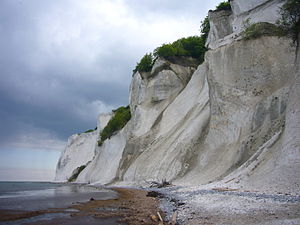Difference between revisions of "AY Honors/Geology - Advanced/Answer Key/es"
(Created page with "</noinclude> {{clear}}") |
(Created page with "</noinclude>") |
||
| Line 91: | Line 91: | ||
{{ansreq|page={{#titleparts:{{PAGENAME}}|2|1}}|num=3f}} <!--T:12--> | {{ansreq|page={{#titleparts:{{PAGENAME}}|2|1}}|num=3f}} <!--T:12--> | ||
<noinclude></noinclude> | <noinclude></noinclude> | ||
| − | |||
<noinclude></noinclude> | <noinclude></noinclude> | ||
Revision as of 11:00, 24 January 2021
| Geología - Avanzado | ||
|---|---|---|
| Asociación General
|
Destreza: 2 Año de introducción: 1975 |
|
Requisitos
|
La especialidad de Geología - Avanzado es un componente de la Maestría Conservación. |
1
Para consejos e instrucciones, véase Geología.
2
2a
2b
2c
2d
2e
3
3a
3b
3c
3d
3e
3f
3g
Folded mountains occur in Orogenic zones such as the Himalayas in Asia, the Rocky Mountains in North American, and the Andes in South America.
3h
The Chalk Formations of Europe are thick deposits of chalk, a soft porous white limestone, deposited in a marine environment during the upper Cretaceous Period. They appear most prominently in England.
3i
Icebergs can be found in arctic areas such as Antarctica, the Arctic Ocean, Iceland, and Greenland.
3j
4
4a
Interesting geology could be mountain ranges, valleys, glacial lakes (such as the Great Lakes in the United States), or even road cuts (for close-up geology). Caves, beaches, plains, and river systems and deltas also provide interesting geological features.
The trip needn't be a long one, though long trips will provide more varied features.
Things to consider when writing the report are the answers to questions such as:
- How was the feature formed?
- What are the rocks made of?
- How is the geology likely to change in the future?
- Did water play a part in the formation of the features? How?
4b
Heavy rains often cause local flooding. Rivers and streams can change course, often washing away roads and buildings. Floods also deposit sediments in fields.
Windstorms can blow down trees (even in large numbers), making the area more susceptible to erosion. They can also create, destroy, or reshape sand dunes.
References
- Categoría: Tiene imagen de insignia
- Adventist Youth Honors Answer Book/Honors/es
- Adventist Youth Honors Answer Book/es
- Adventist Youth Honors Answer Book/Skill Level 2/es
- Categoría: Libro de respuestas de especialidades JA/Especialidades introducidas en 1975
- Adventist Youth Honors Answer Book/General Conference/es
- Adventist Youth Honors Answer Book/Nature/es
- Adventist Youth Honors Answer Book/Nature/Primary/es
- Adventist Youth Honors Answer Book/Stage 0/es
- Adventist Youth Honors Answer Book/Conservation Master Award/es
- AY Honors/Prerequisite/Geology/es
- AY Honors/See Also/Geology/es
- Adventist Youth Honors Answer Book




